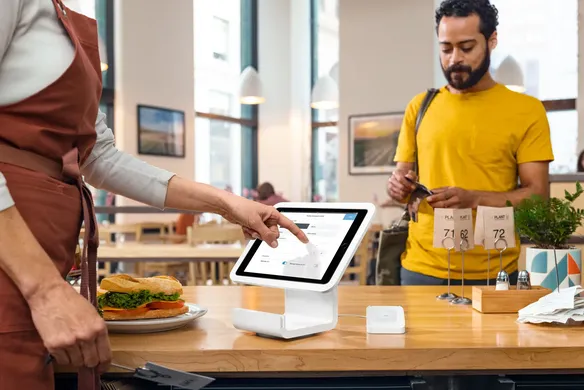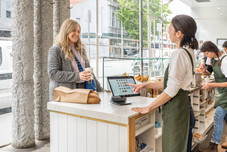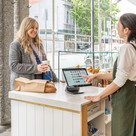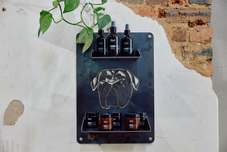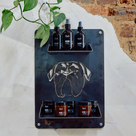Table of contents
The best customers are loyal customers: the type that you have a meaningful relationship with, and who you can trust to keep coming back for more. In some cases they can even be proxy salespeople: brand ambassadors who talk about your products and services with their friends and family, creating an ever-increasing number of loyal customers without your business needing to lift so much as a finger.
Today we’re going to take a deep dive into customer loyalty: what it is, why you should care about it, how to measure it, and how to ultimately increase it.
What is customer loyalty?
What is customer loyalty? It seems an obvious question, but customer loyalty is simply when you have a loyal customer. What does the word ‘loyal’ really mean in this context?
The answer will depend on your business. A customer who is loyal to a car dealership may only demonstrate that loyalty once a decade, while a loyal supermarket shopper can show their commitment every week.
In general terms, customer loyalty can be described as a positive, long-lasting and mutually beneficial relationship between a business and its customer. In these relationships a customer will be driven to make repeat purchases – be they daily or once a decade – choosing this business’s offering over a competitor’s, even if those offerings are like for like.
Branding is a key feature of customer loyalty. Customers tend to distill all that they love about dealing with business-friendly customer service, meaningful values, great prices, quality products – into a positive glow that they associate with the brand. As these positive experiences build-up, the connection that the customer feels with the brand becomes deeper and more meaningful, to the point where they don’t consider shopping elsewhere.
The strength of this connection means that loyal customers tend to survive the odd bad experience because a brand has built up enough loyalty credit to take the hit.
The importance of customer loyalty
Why is customer loyalty important? The answer can be found in the numbers. You’ll need to spend anything from 5-25x more to attract a new customer than you will to retain a current customer. The probability of converting a new prospect to a customer is 5-20%, while a repeat customer has a 60-70% likelihood of converting. Existing customers are 50% more likely to try new products, and spend 31% more in the process.
Retaining customers is cheaper and earns you more than if you constantly have to find new ones. As more loyal repeat customers are created, selling becomes less difficult.
6 types of loyal customers
Not all loyal customers are built the same. They present in different forms, display different behaviours, and are loyal to varying degrees. They can generally be placed in the following six categories:
1. The happy customer
The happy customer can in some ways be considered ‘pre-loyal’, and many businesses won’t even be aware of the customers who sit in this group. They are fans of your products, services or brand who have usually purchased from you more than once, and would do it again. But because they aren’t yet entirely loyal, they can also be fickle and chase better deals, discounts or experiences elsewhere.
2. Price loyalists
These thrifty customers are loyal to you for one reason above all others: price. If you offer the best price, they’ll stay. If a better price can be found down the road, they’ll go there. Retaining this customer is simple, but not always profitable.
3. Incentive loyalists
These customers aren’t really loyal to your brand or your products – they’re loyal to what you don’t sell. Loyalty programs, incentives, freebies, add-ons; if they can get something for nothing, they’re happy. Like price-loyalists, these aren’t the most profitable of loyal customers.
4. Convenience loyalists
These customers are less loyal to your products and services than they are to the experience you deliver. If the buying process is simple and automated, if your shop is easy to find, if you offer drive-thru services, if you can deliver the next day, you’ll keep these efficient operators loyal.
5. True loyalists
True loyalists display customer loyalty in its purest form. These are the customers who are so happy with your brand that they no longer consider shopping elsewhere, repeatedly purchasing from you whenever they need more of the thing you sell.
6. Brand advocates
There’s actually a level above true loyalists – the customer who becomes a salesperson. Brand advocates are so chuffed with your brand that they feel compelled to share their experiences with loved ones. They turn their friends, families and colleagues into customers while continuing to buy from you themselves.
5 ways to measure customer loyalty
Loyalty almost seems intangible – something that you don’t measure so much as has a gut feel for. While that may have once been the case, our modern world has served up a wealth of ways in which to measure and analyse customer loyalty, including:
1. Net Promoter Score (NPS)
NPS asks a customer a simple question: on a scale of 1-10, how likely are you to recommend this company to others? By subtracting the percentage of customers who wouldn’t recommend you from those who would, you get a score out of 100. NPS is perfect for measuring customer loyalty at a large scale and over long time periods.
2. Customer retention rate
This metric measures how many loyal customers you have, and how long they stay loyal. Ideally, both numbers will rise over time.
3. Negative churn
This metric is far more positive than it sounds. Where ‘customer churn’ measures the rate at which your customers leave, negative churn measures the rate at which customers upgrade memberships or increase their spending.
4. Customer effort score
A cousin of NPS, CES asks customers ‘how difficult was it to solve a recent issue you had?’ Where NPS measures emotion, CES gets a better sense of a customer’s true experience.
5. Referrals and social media
How do customers get to your website, besides search engines and your paid advertising efforts? Referral traffic measures how many people link to your site, while social media mentions measures how many customers are talking about you on their social media profiles.
4 Ways to increase customer loyalty
Now that we know what to measure, how do we get those numbers heading in the right direction? The following four customer loyalty strategies are a great place to start.
1. Offer amazing customer service
86% of buyers are willing to pay more for a better customer experience. What does amazing customer service look like for your business? It might be about efficiency, friendliness, taking your time, or simply offering a welcoming smile.
2. Personalise the experience
Another way to enhance the customer experience is to personalise it. In a world awash with data, this is easier than ever. Ecommerce retailers can save the basic information on a past customer, and next time they can welcome them by name, and offer up products based on their previous purchases.
3. Consider the customer journey post-purchase
What happens after a customer makes a purchase? Do you simply hope that they come back? Why not get proactive? Send a special offer post-purchase, use remarketing to keep your brand top of mind, or invite them to join a loyalty program. Speaking of which…
4. Create a loyalty program
Loyalty programs are the most reliable and effective way to encourage loyalty, and thanks to Square Loyalty, there’s never been an easier way for eCommerce retailers to create their own pool of loyal customers.
How Square Loyalty can help improve customer loyalty
Square Loyalty allows a Square Seller to build a customer loyalty program right from their point of sale (POS). Any time a customer makes a purchase, they can be instantly enrolled in your program directly from your POS – no additional software or hardware required.
The program itself can be built however you’d like: members can accrue points, access discounts or enjoy freebies based on their dealings with you. With all relevant customer information kept in one place, you can treat each person like a regular, while delivering enticing offers either in-person or via the internet.
Loyal customers are the most valuable customers. And thanks to Square Loyalty, you can gain more of them than ever before.
Square Loyalty
![]()

